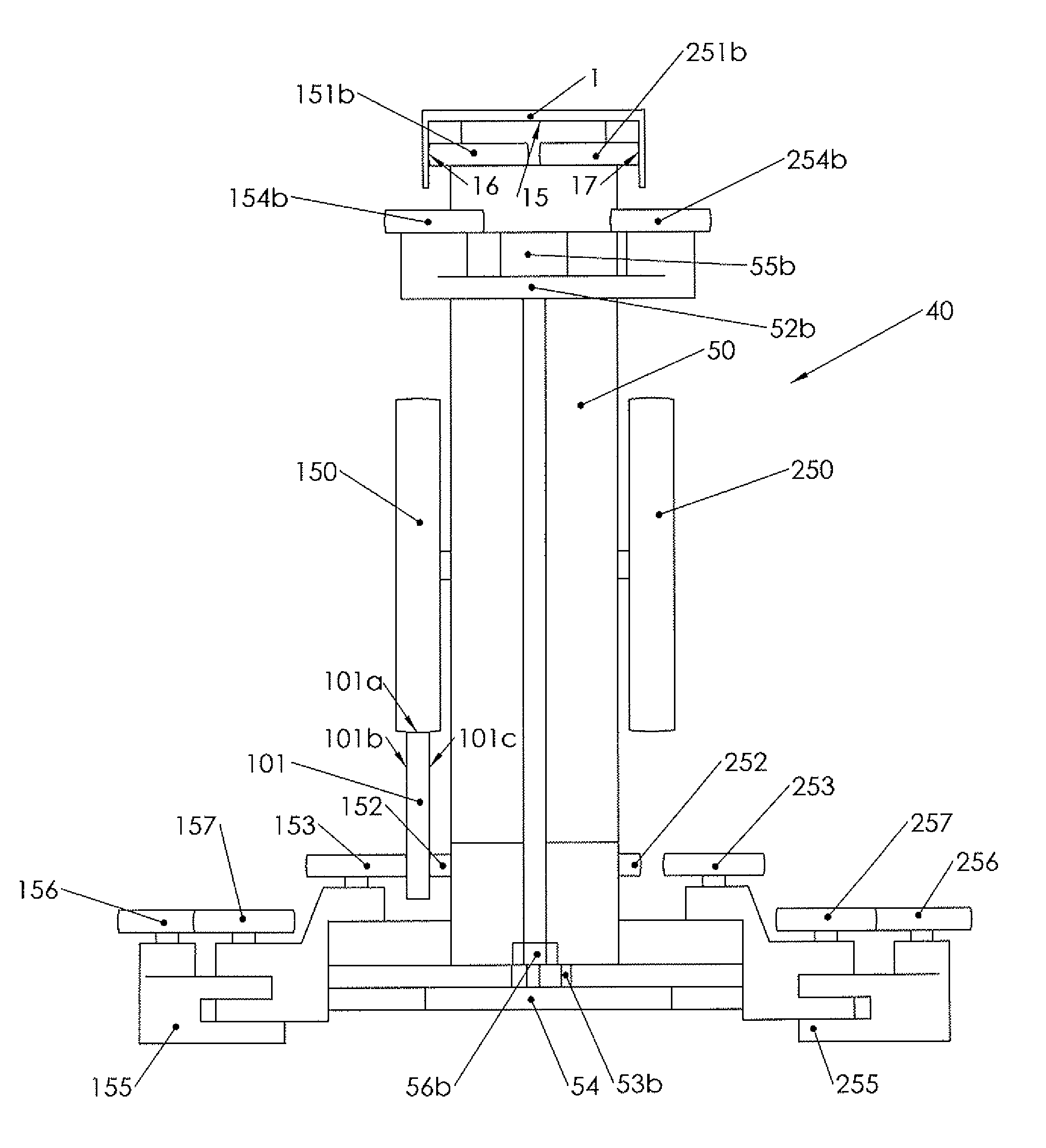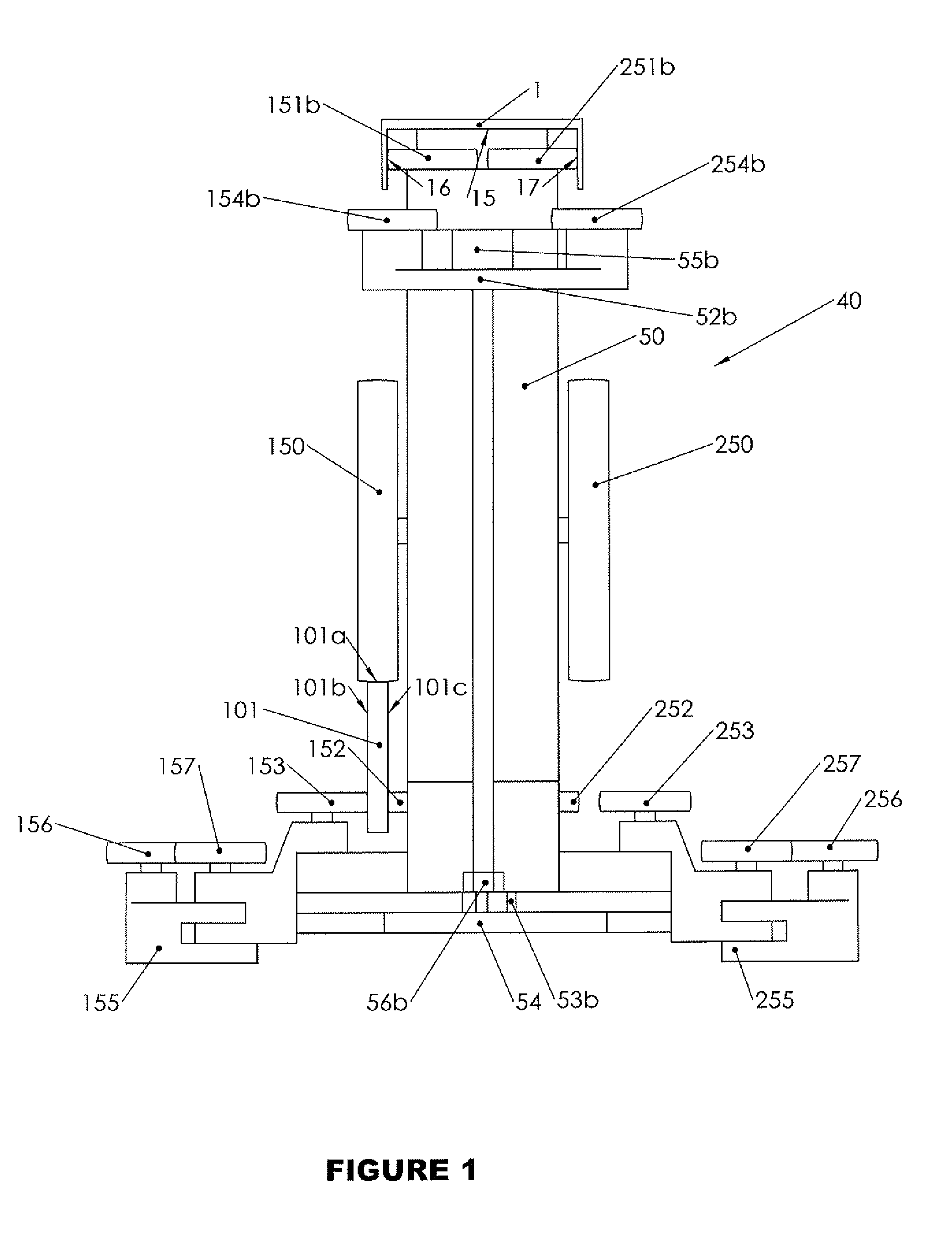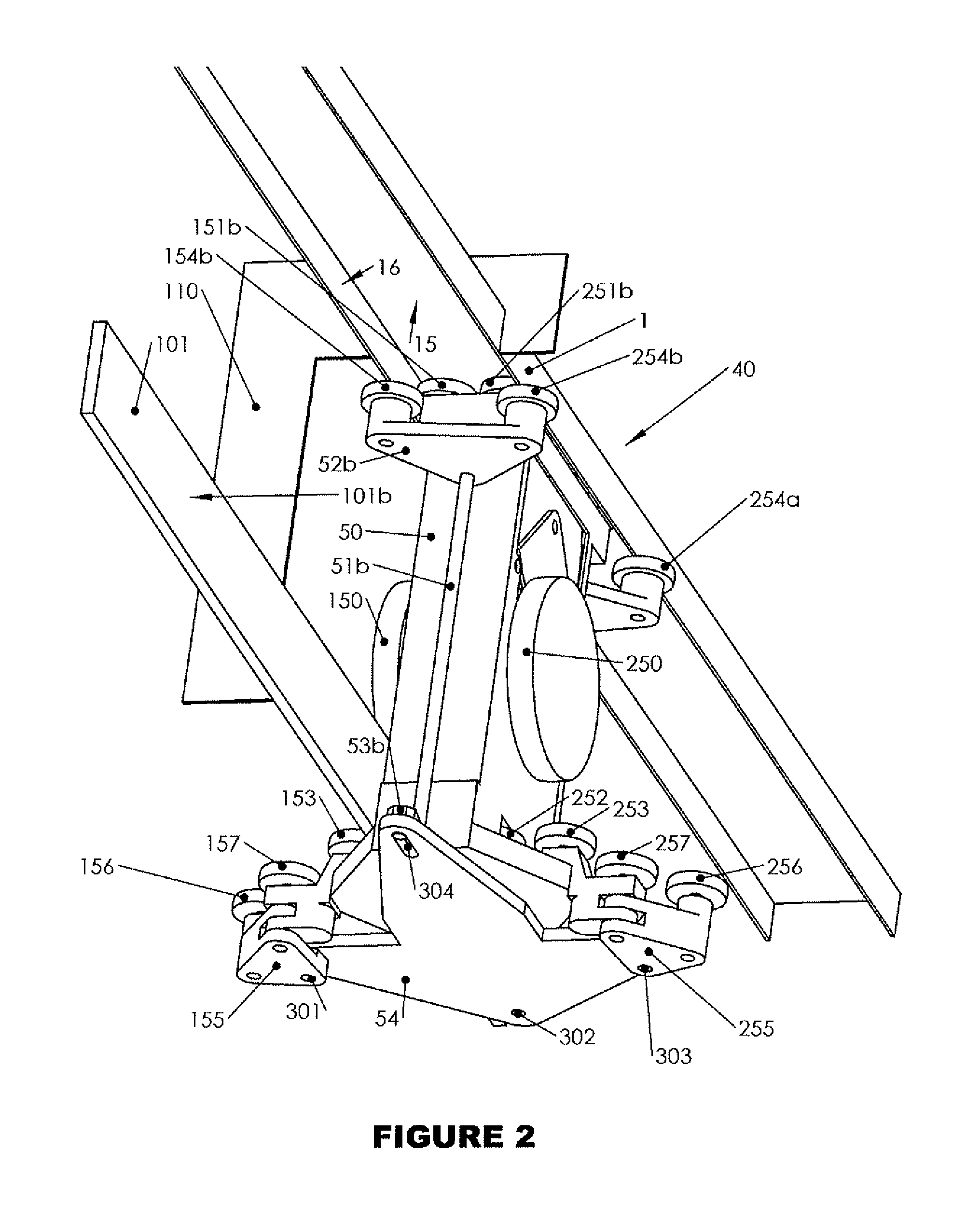Track and bogie for suspended vehicles
a technology of suspended vehicles and bogies, which is applied in the direction of railways, rope railways, locomotives, etc., can solve the problems of linear electric motors in general being more expensive and less efficient than rotating electric motors, and the system is economically infeasible, so as to prevent any significant slippage of the drive wheels, reduce the rolling resistance of each drive wheel, and ensure the stability of the system
- Summary
- Abstract
- Description
- Claims
- Application Information
AI Technical Summary
Benefits of technology
Problems solved by technology
Method used
Image
Examples
Embodiment Construction
[0029]In the following embodiments of the invention will be described more in detail with reference to the enclosed drawings.
[0030]In FIG. 1 a preferred embodiment of a bogie is shown on a straight track section consisting of an upper u-shaped track member, the first track member 1, and a lower track member, referred to as the second track member 101, in this case arranged to the left in the direction of travel. These first 1 and second 101 track members are fixedly connected to each other, for instance using ribs (110, see FIG. 2) and preferably enclosed in a u-shaped cover with a downwards facing opening (not shown).
[0031]A bogie 40 has a bogie frame 50 holding left and right load bearing wheels 150, 250. In the shown embodiment, the left load bearing wheel 150 is in contact with the upwards facing surface 101a of the left second track member 101, thus transferring the downwards directed force from the bogie to the track. The bogie 40 is provided with upper guide wheels 151a, 151b...
PUM
 Login to View More
Login to View More Abstract
Description
Claims
Application Information
 Login to View More
Login to View More - R&D
- Intellectual Property
- Life Sciences
- Materials
- Tech Scout
- Unparalleled Data Quality
- Higher Quality Content
- 60% Fewer Hallucinations
Browse by: Latest US Patents, China's latest patents, Technical Efficacy Thesaurus, Application Domain, Technology Topic, Popular Technical Reports.
© 2025 PatSnap. All rights reserved.Legal|Privacy policy|Modern Slavery Act Transparency Statement|Sitemap|About US| Contact US: help@patsnap.com



